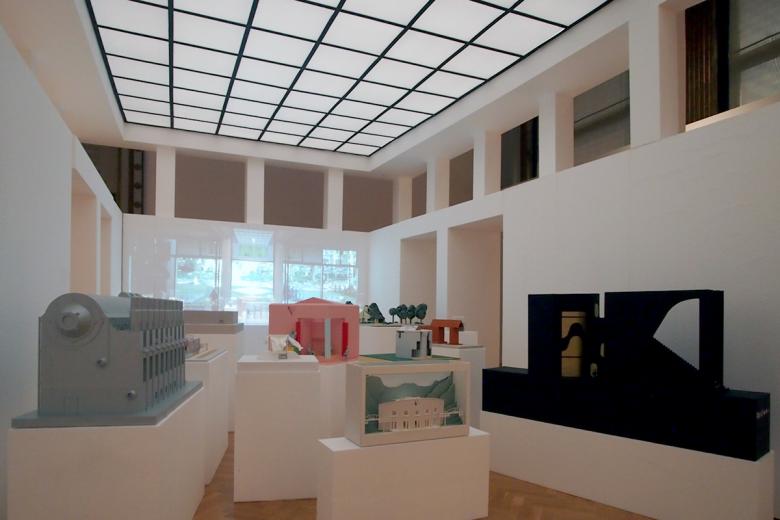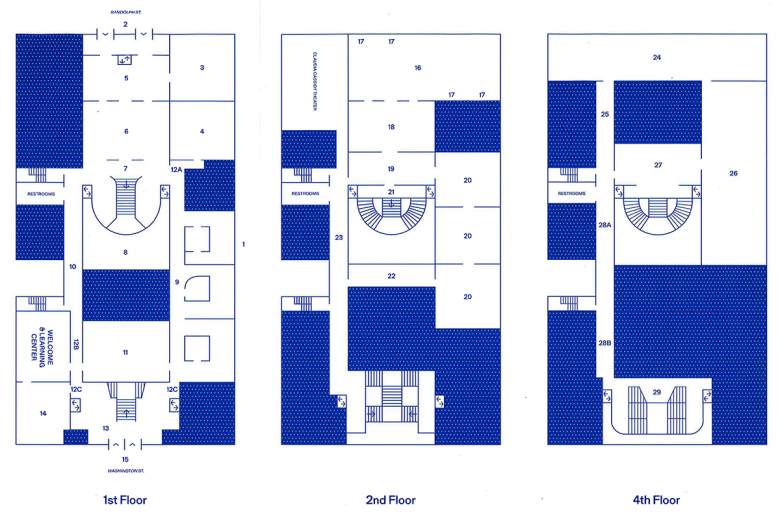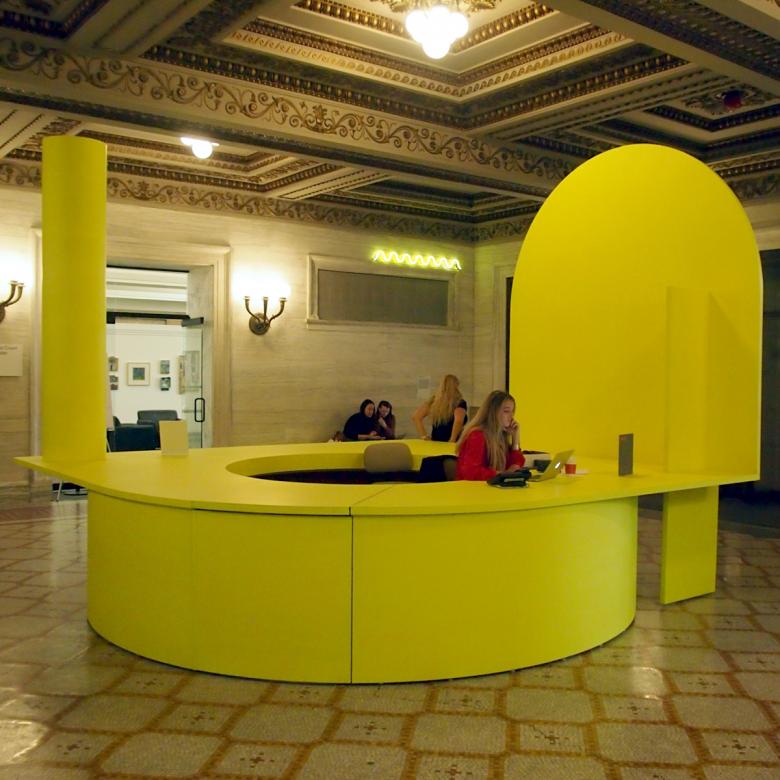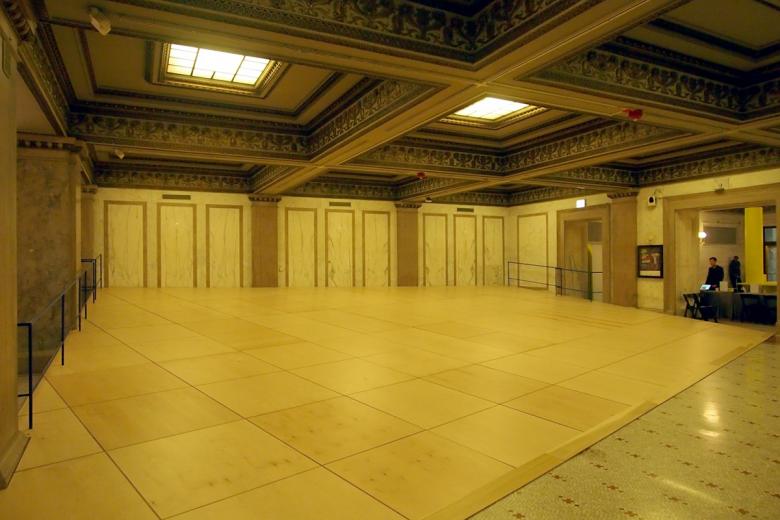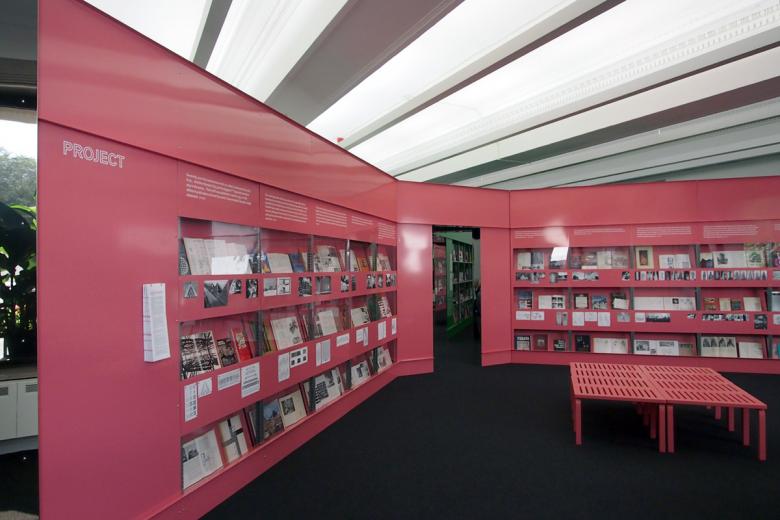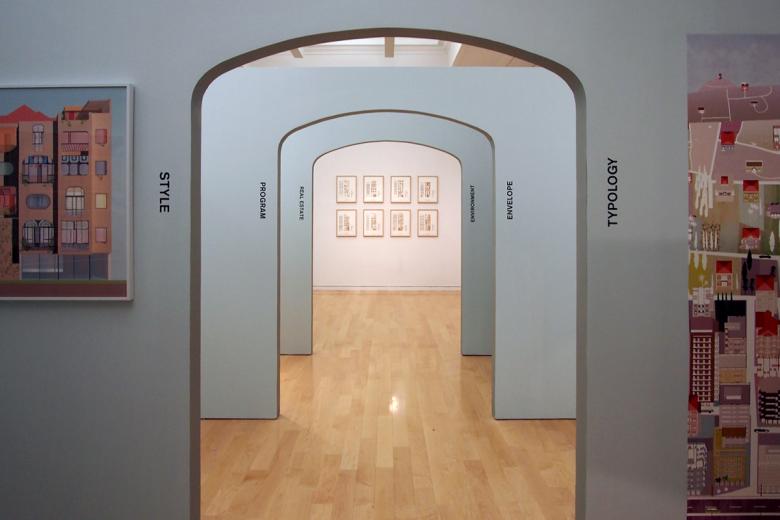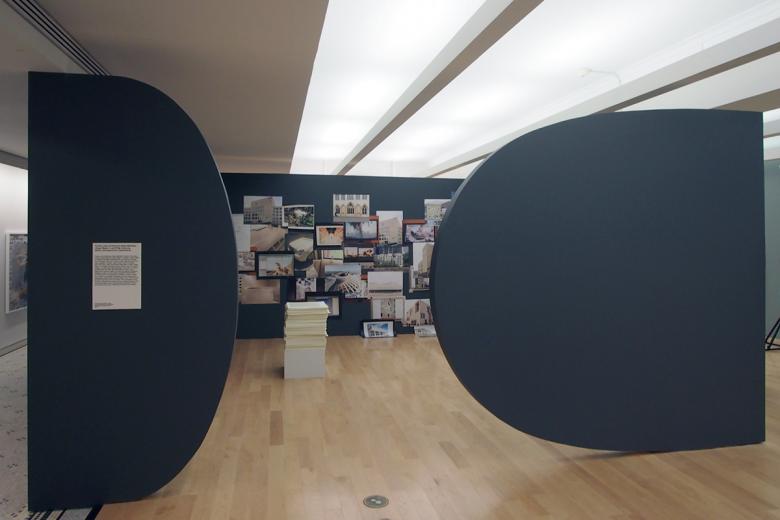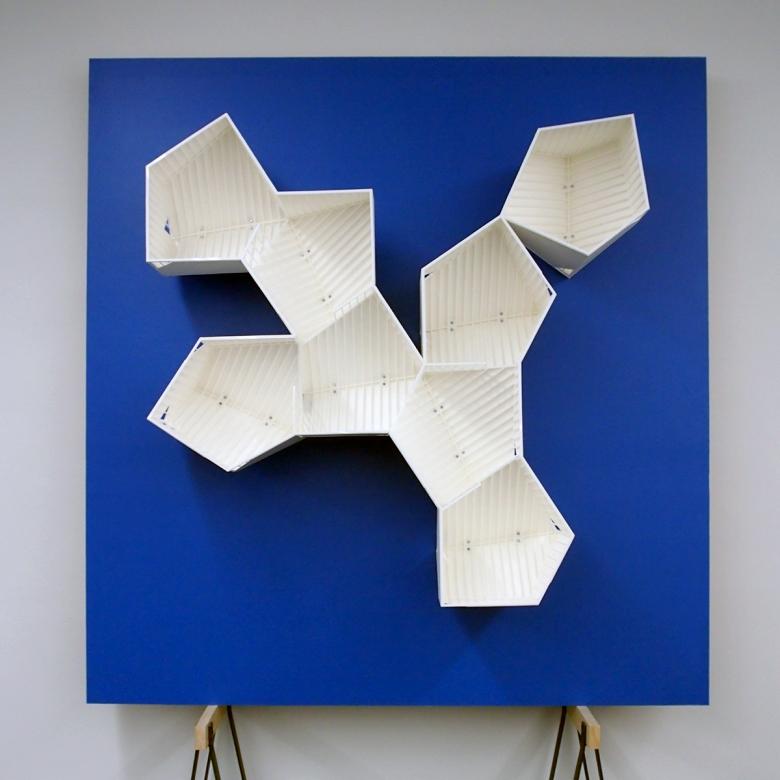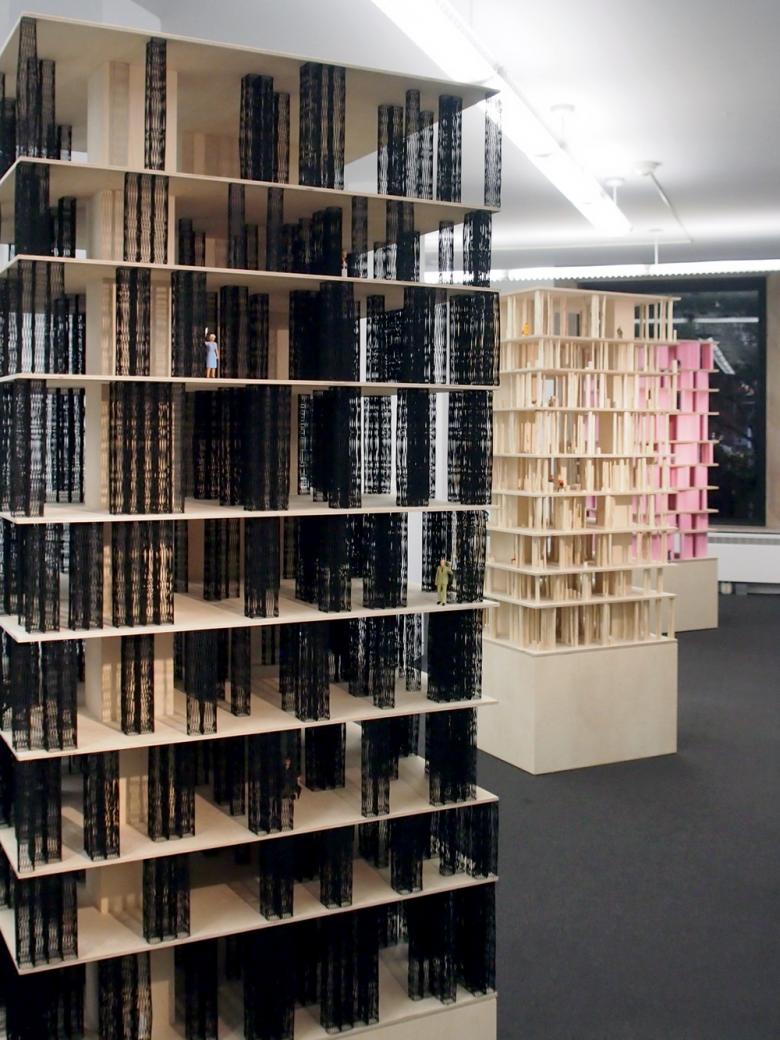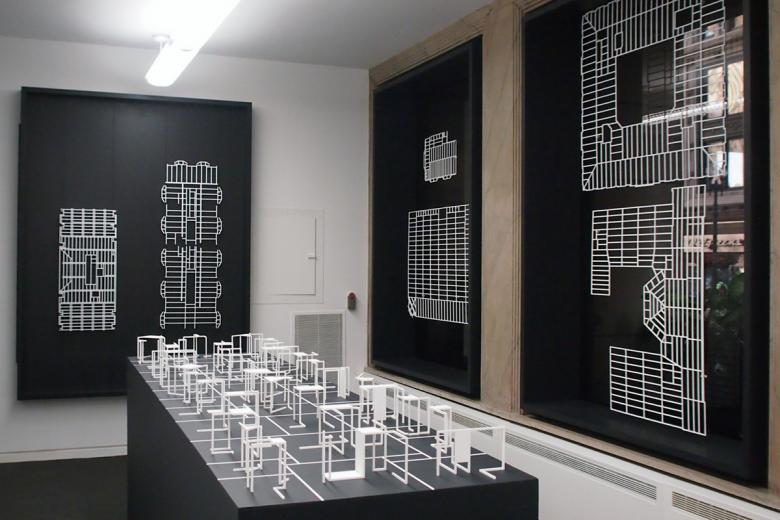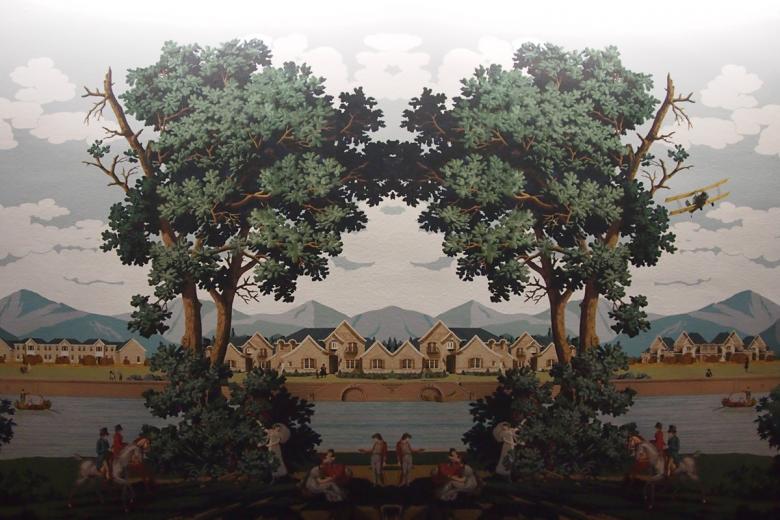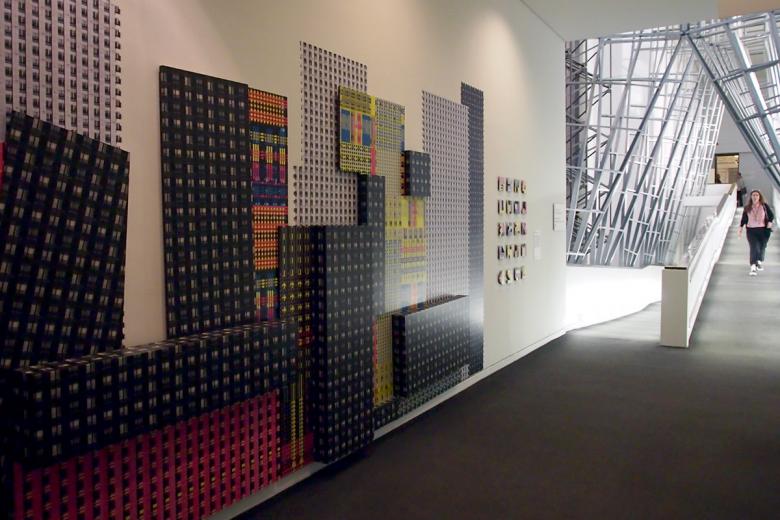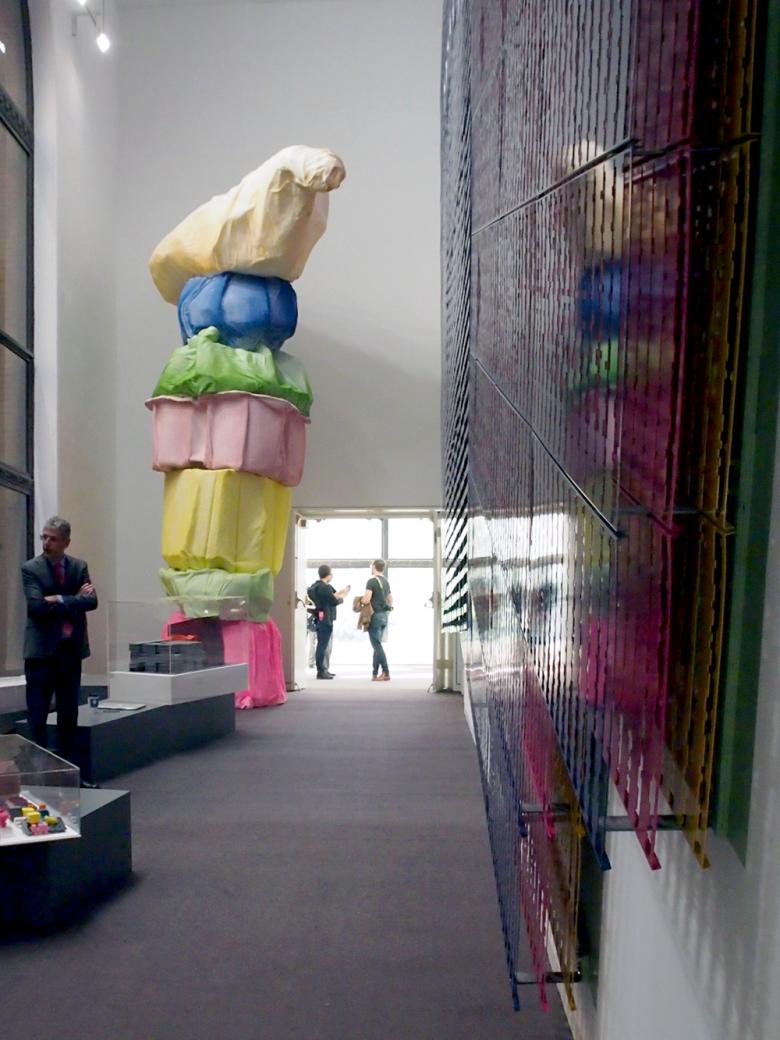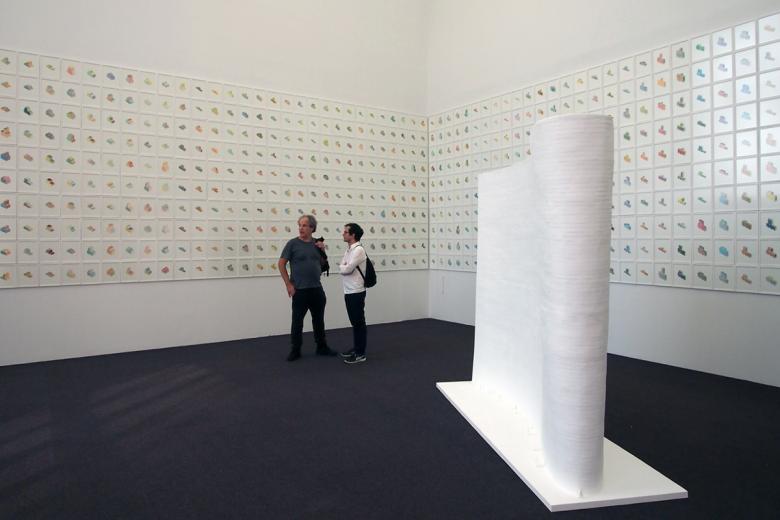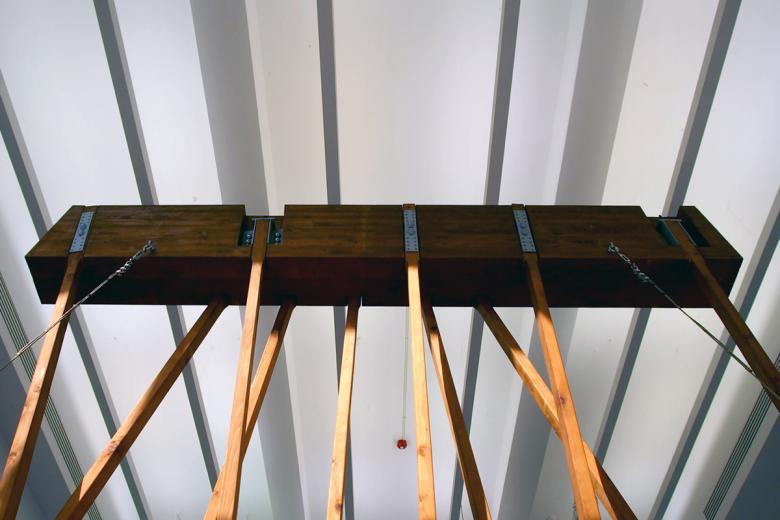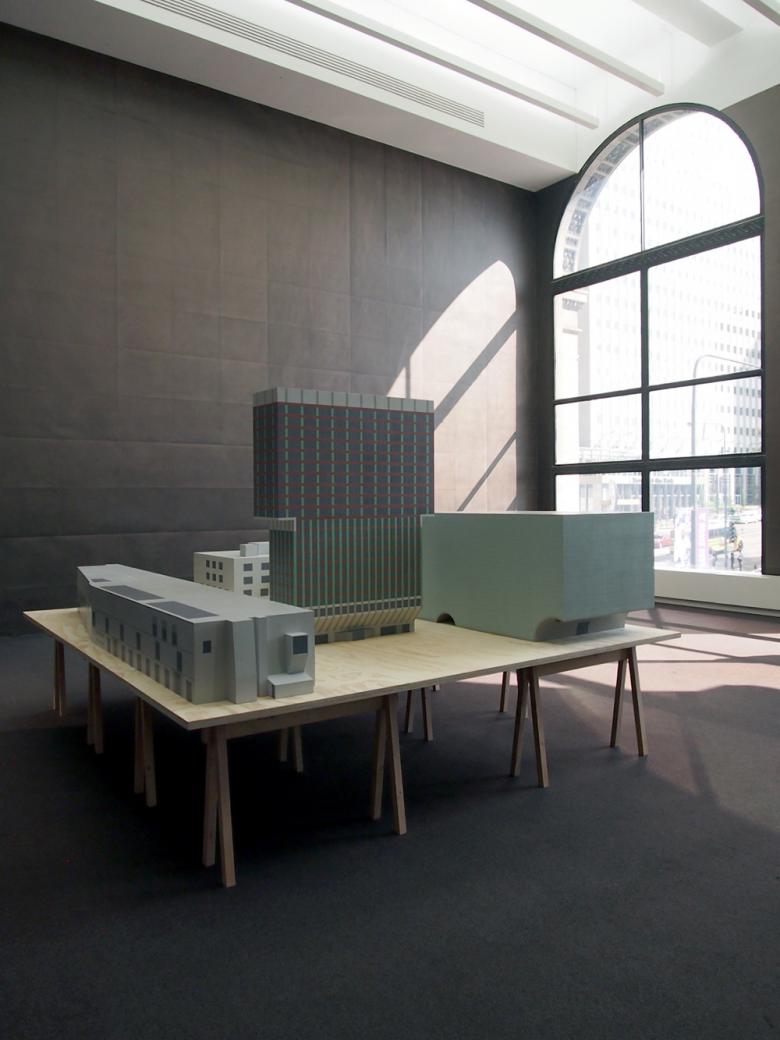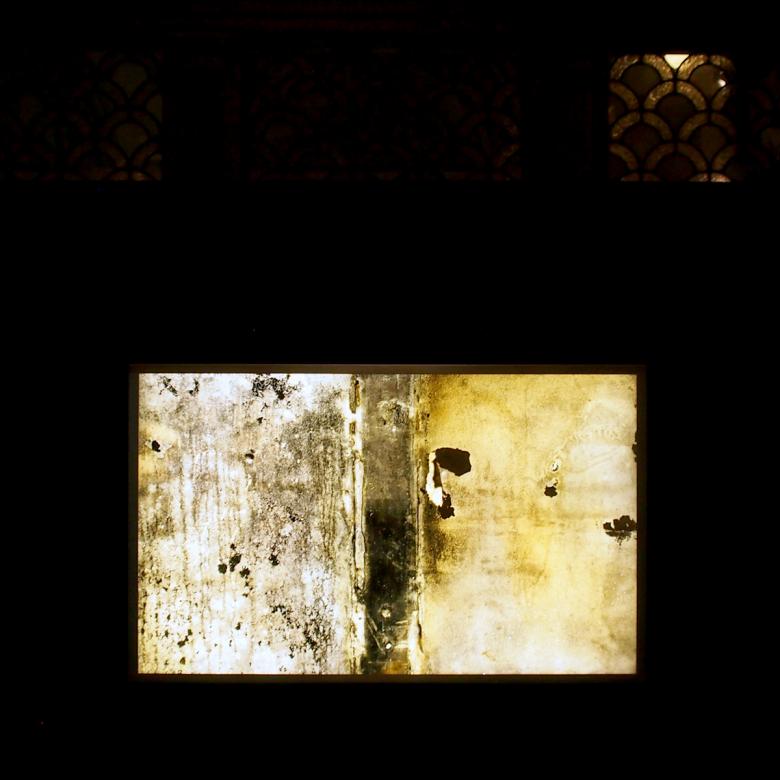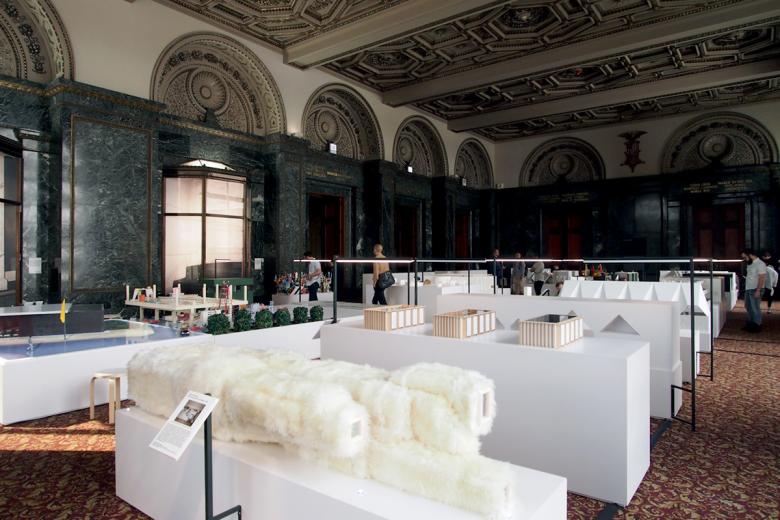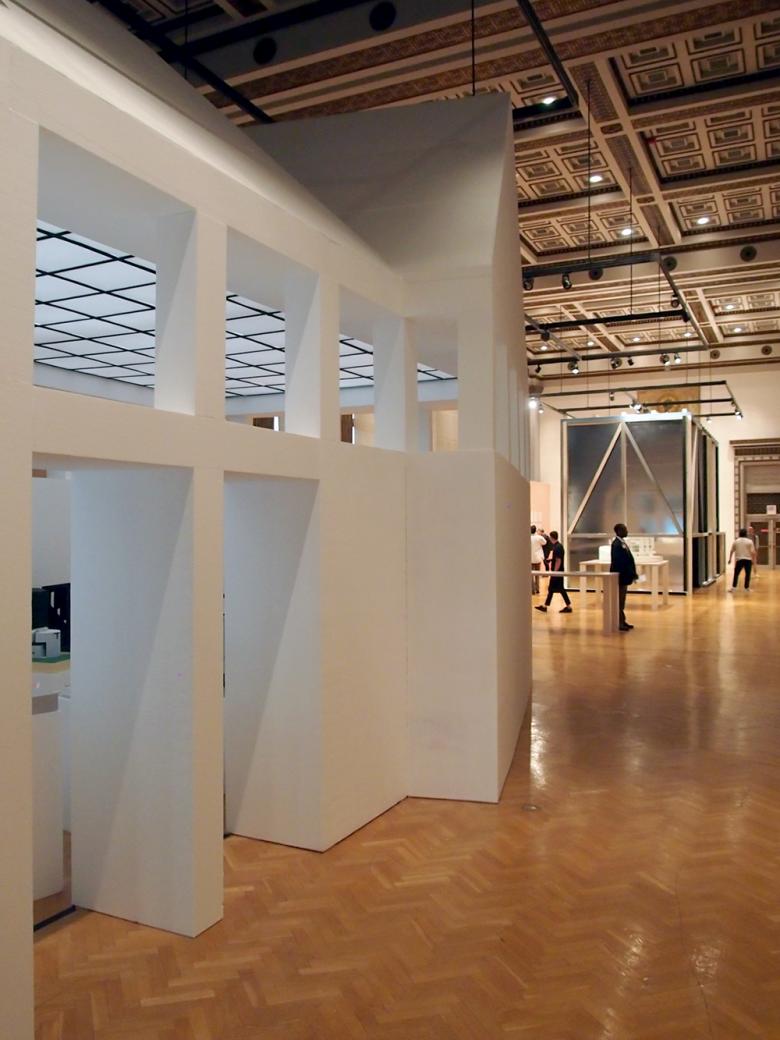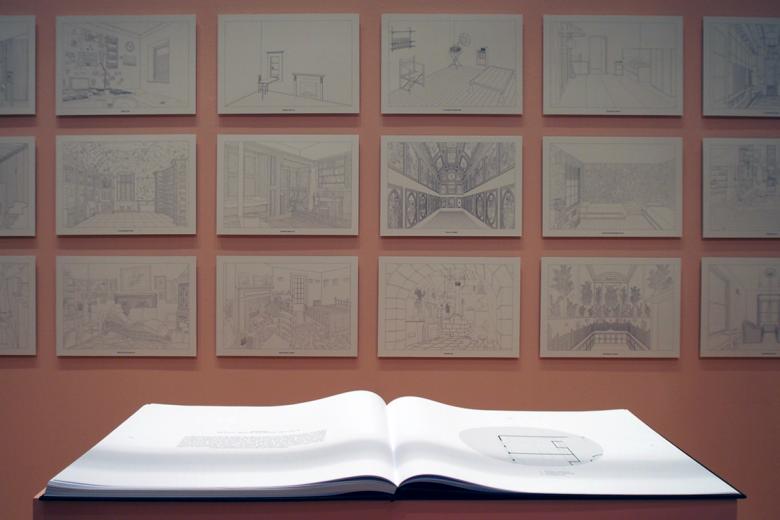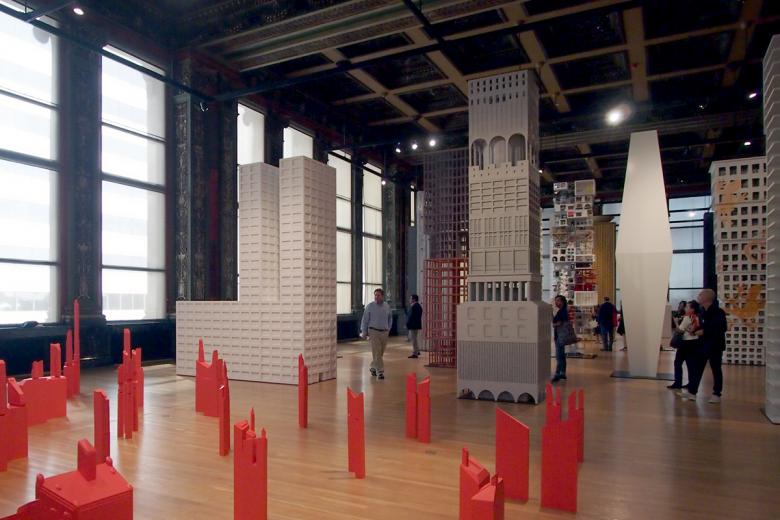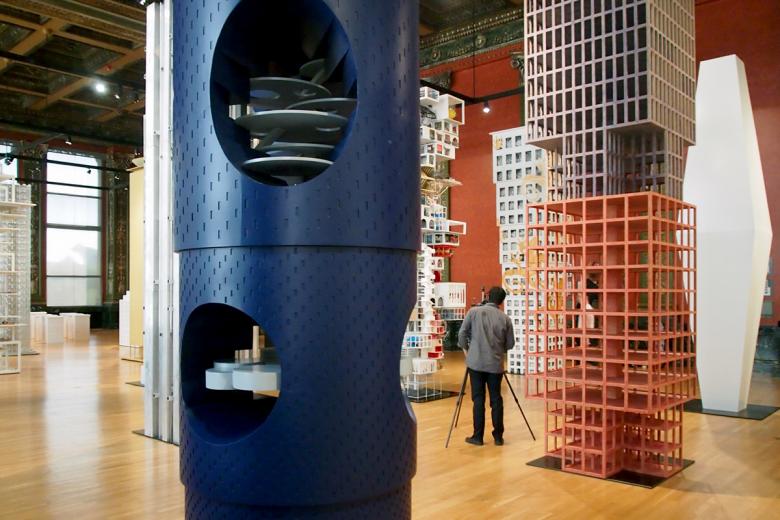25. September 2017
All photographs by John Hill/World-Architects
The second Chicago Architecture Biennial opened to the public for its four-month run on September 16th. Artistic directors Sharon Johnston and Mark Lee, of Los Angeles firm Johnston Marklee, asked participants to address the theme Make New History. How did they respond?
In this, our last bit of coverage on the 2017 Chicago Architectural Biennial, we weave together words and images: the first in an attempt to make sense of the curators' Make New History theme and to determine how participants responded to it; the second as a tour through the Biennial's main venue, the Chicago Cultural Center, moving from the main entrance on Randolph Street to the top-floor gallery in Yates Hall. Previous articles on this year's Biennial, some of them referenced in the below words and images, include:
At the Cultural Center:
Scan from Biennial pamphlet showing plan of the Biennial spread across three floors of the Chicago Cultural Center. Numbers in photo captions refer to numbers on the floor plans.
This being the second Chicago Architecture Biennial, it's hard not to compare it to the first. The artistic directors of the inaugural Biennial, Joseph Grima and Sarah Herda, borrowed a phrase from the past, specifically Chicago architect Stanley Tigerman's 1977 symposium at the Graham Foundation, The State of the Art of Architecture. This year's directors, Los Angeles architects Sharon Johnston and Mark Lee, do a similar thing, referencing a 2009 artwork by Ed Ruscha, Make New History. Ruscha's piece is simply a thick, 624-page book with a blank cover, the artist's signature on the binding, and the eponymous phrase stamped onto the edge of the pages. Inside are blank pages that invite anybody who purchased the limited edition artwork to effectively "make new history."
#5 – Randolph Street Lobby: "Entrance Installation" by Ania Jaworska. This bright yellow installation literally covers an existing information desk, doing so with an ironic treatment of an arch (solid instead of open) and column (supporting nothing) that recalls Postmodern architecture from decades ago.
#6 – Randolph Square: "Randolph Square" by Frida Escobedo. Just beyond the lobby is an inclined plane that "interrogates the grid" (ever-present in Chicago) and invites people to play and improvise upon it. Apparently the press invited for the preview were not inclined toward improvisation.
#3 – "Rooms for Books" by MG&Co. Next to the lobby is a room subdivided into four triangular spaces through the insertion of four diagonal walls. A bookstore fills one, while the others include an archive of books by participating architects, a room for talks and production, and a display of books (seen here) from the library of husband-wife architects Stanley Tigerman and Margaret McCurry.
It's possible to interpret the phrase "make new history" as a call to action: to make something new that will one day be history. Architecture does this everyday, but it does so in competing ways: by fitting in with its context or by setting itself apart from what came before. The latter is the infatuation of some of the most high-profile architectural production today, especially when it comes to cultural facilities envisioned as ready-made icons. The downside of such an approach is that most icons – or buildings aspiring to be such – do not consider longevity; instead they aim for instant recognition and gratification through images and their proliferation. Johnston and Lee are questioning this tactic by asking to participants to consider what came before, but to do so with fresh eyes.
#9 – Michigan Avenue Galleries: "Art Deco Revisited" by WORKac. Amale Andraos, half of WORKac with her husband Dan Wood, is from Lebanon so they focus on the rebuilding of Beirut after the Lebanese civil war. Specifically they look at one villa in order to explore preservation's potentials and pitfalls.
#9 – Michigan Avenue Galleries: "Cosmic Latte" by Jürgen Mayer H. and Philip Ursprung. Noticing that the built environment is characterized by "moderating" beige rather than Modernist white, Mayer H. and Ursprung embrace the "homogenization of the built environment" to "quite optimistically show the potential of architecture."
In their curatorial statement, Johnston and Lee acknowledge that "a generation of architects has noted a renewed interest in precedents of architecture." Yet unlike the ironic and backwards approach of Postmodern architects in the 1970s and 80s, they see this new generation of architects "producing innovative and subversive works grounded in the fundamentals of the discipline ... rooted in the fabrics of the cities where they are built ..." Some of these neo-Postmodern impulses were on display in the inaugural Biennial in 2015, but this year the approach is obviously more pervasive, found throughout the galleries in the Cultural Center yet balanced by singular voices that only marginally reference history.
#14 – Washington Gallery: "The Balloon Frame Revisited" by Stan Allen Architect. This wall-mounted model references the 1833 Chicago invention, the balloon-frame, but pushes it toward angular forms and communal arrangements.
#14 – Washington Gallery: "Housing History: Three Residential Towers" by Barkow Leibinger. The German architects mined three diverse historical precedents toward the design of three residential towers in Berlin.
#14 – Washington Gallery: "Chicago Reframed" by Design With Company. This young practice unveiled the hidden steel frames of Chicago building in drawings and used models to reconfigure them in atypical ways.
Given both that Johnston and Lee are practicing architects rather than professional curators (unlike Grima and Herda, both of whom helmed the Storefront for Art and Architecture at one time) and that the theme responds to an evident trend in contemporary architecture, the selection of participating architects and artists is of the utmost importance. The resulting list of more than 140 participants balances young architects who fit neatly into the Make New History theme with more established, well known architects that will entice visitors to the Cultural Center. Color is one way to see where particpating architects fall into this spectrum, with historically minded youngsters not shying away from color (including Postmodern pastels) and more set-in-their-ways architects distilling everything to white. This makes for a colorful exhibition though one that rewards visitors willing to examine individual projects and contributions carefully; this is not a superficial, Postmodern affair.
#23 – Transition Corridor: "A Purloined Argument" by Keith Krumwiede. Part of this walkway is lined with images culled from "An Atlas of Another America: An Architectural Fiction," a remarkable exploration of builders homes, real estate, and the American dream.
#23 – Transition Corridor: "Building Portraits" by Atelier Manferdini with SO-IL's "Passage" from 2015 in the background. Mies van der Rohe is a constant presence in Chicago and the city's architectural history, though he is found sporadically in the Biennial. Aterlier Manferdini manipulates nine photos of Mies buildings to explore how he was as much a decorative architect as a rational one.
#22 – Crossover: Piece on wall by Zago Architecture and model by Pascal Flammer. Color is a main ingredient in these two striking and strikingly different pieces squeezed into the passage connecting the east and west sides of the second floor.
One way of structuring the more than 140 participants is through the four emergent themes that Johnston and Lee discovered:
- Building Histories, focused on individual buildings as precedents
- Material Histories, where the manipulation of matter is explored
- Image Histories, that follow how digital tools manipulate images
- Civic Histories, focused on urban and interior settings
#20 – Chicago Galleries: "The Chapel" by junya ishigami+associates in foreground and Pezo von Ellrichshausen's "Finite Format 04" on the walls. More than others, these two contributions distance themselves from the Biennial theme, presenting a model of an in-progress design and a grid of drawings that are self-referential rather than grounded in external precedents.
#20 – Chicago Galleries: Mockup of Studio Gang's Writers Theatre in Glencoe, Illinois. Two years ago this space was home to Gramazio Kohler's innovative "Rock Print," but this year it's graced by a full-scale model in wood – an invitation to head to Chicago's north suburbs and see the building in person.
#20 – Chicago Galleries: "Construction and References" by Caruso St John with Thomas Demand and Hélène Binet. The models of Caruso St John and photos of Binet are housed in a room dramatically affected by Demand's simple wallpaper.
Even though the four thematic strands permeate the Cultural Center's spaces, the building – completed in 1897 as the city's main public library and transformed to a cultural center in 1991 after the Postmodern Harold Washington Library opened – is not a static container; it influences the contents, or at least their placement. The Michigan Avenue Galleries on the first floor, for instance, have a lower ceiling height than the floors above, so they are home to models and drawings of an intimate size and scale. Accordingly, Johnston and Lee envisioned these galleries as a labyrinth that requires visitors to wind their way through the compact spaces. The duo also took care with the corridors on the west side of the building, the odd spaces that were created in the years since the building gained its current function. And with the grandeur of the rooms increasing as one ascends the building, there is a progression in the exhibition that culminates in Vertical City, one of the few elements of the Biennial at the Cultural Center that explicity addresses its host city.
#19 – Gar Hall Vestibule: "Ethics of Dust" by Jorge Otero-Pailos. The Columbia University preservationist's casts of atmospheric deposits on international monuments are haunting in their beauty, confronting history in one of the most direct yet unexpected ways.
#17 – Gar Hall: "Horizontal City." Architectural interiors are the focus of this exhibit on the second floor, which assembles models based on famous images of the past.
Another component of Make New History that addresses Chicago directly is A Love of the World, a photographic exhibit curated by Jesús Vassallo that is also spread across the Cultural Center. James Welling's "psychedelic" photos of Mies van der Rohe's buildings cover the upper-floor windows facing Michigan Avenue and Millennium Park; David Schalliol's photos depicting the demolition of Chicago's public housing are located in a corridor alongside Scott Fortino's photos that explore the transparency of Miesian buildings; Marianne Mueller's photos of the Cultural Center itself are mounted discretely into glass vitrines in the second-floor Gar Hall; and, among other contributors, Luisa Lambri's photographs of Mies's Farnsworth House line a corridor leading to Vertical City. The importance of image and photography in shaping the dissemination and understanding of architecture is obvious, but here it is done in a manner that is more artistic and sociological than architectural.
#26 – Exhibit Hall: "Super Models" by Sylvia Lavin in the foreground and "(Study for) Chapel for Scenes of Public Life" by baukuh and Stefano Graziani in the distance. The large spaces on the fourth floor enable large-scale installations.
#26 – Exhibit Hall: "Rooms" by Dogma. Alongside the chapel study is a grid of drawings that explore the room as the fundamental means of making space. Precedents range from antiquity to today.
The 2017 Chicago Architecture Biennial arrives when the United States is led by someone on the verge of starting a war via Twitter and when the warming world is ravaged by natural disasters that are both stronger and closer together. In this context, Johnston and Lee's Biennial has a welcoming calmness to it. There are no overt political references in the show, nor do we find architects confronting technology, climate change, racial violence, or other concerns consuming the world and the US. Past is king at the Cultural Center and the world's problems are left at the door, at least for a few hours. Make New History provides a respite from today's chaos, but it remains to be seen if its myriad contributions are remembered for years to come – or quickly forgotten as the present becomes yet another history.
#24 – Sidney R. Yates Hall: "Heliomorphic Chicago" in the foreground and "Vertical City" beyond. Although Chicago is the basis for these models in Yates Hall, they all explore ideas more universal to architecture and cities.
#24 – Sidney R. Yates Hall: "Vertical City." If any contributions will be remembered from the 2017 Biennial, it will be these models that offer alternatives to 1922 Chicago Tribune Tower competition and the "late entries" that followed in 1980.
The 2017 Chicago Architectural Biennial runs from 16 September 2017 to 7 January 2018 at the Chicago Cultural Center, 78 East Washington Street. In addition to the main exhibition at the Cultural Center, the program consists of six anchor sites (Beverly Arts Center, DePaul Art Museum, DuSable Museum of African American History, Hyde Part Art Center, National Museum of Mexican Art, and The National Museum of Puerto Rican Arts and Culture) and numerous events throughout the duration of the Biennial.
Related articles
-
Making New History in Chicago
on 9/25/17
-
MCA Changing
on 9/19/17
